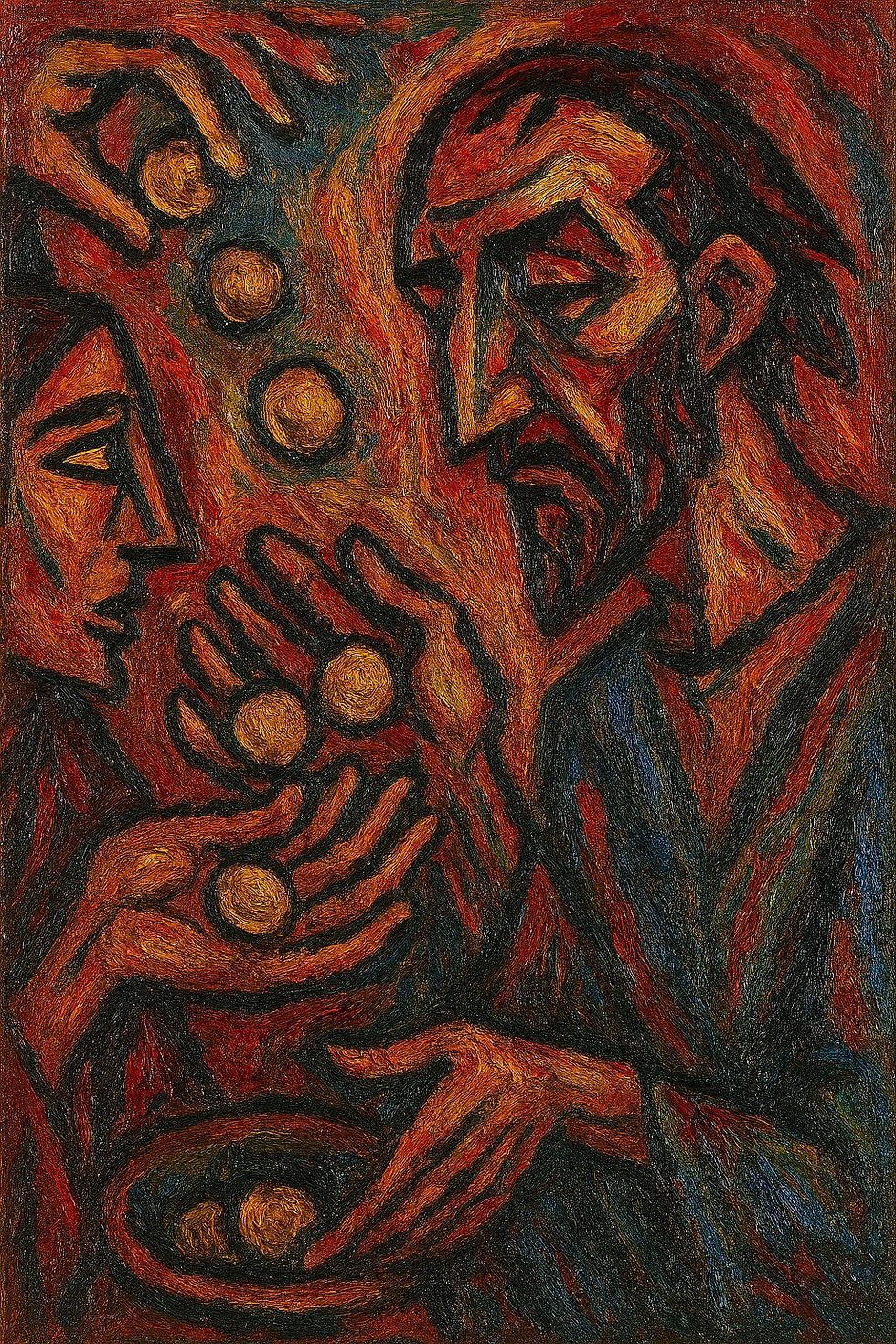fusion outbreak : starry night
- Martin Döhring

- 2. Feb.
- 2 Min. Lesezeit
Imagine an art studio where the vibrant energy of two legendary artists, Vincent van Gogh and Wassily Kandinsky, converge in an unprecedented fusion of styles. The year is not specified, but the air is thick with the creative tension of two different worlds clashing and harmonizing.
The Setting: The studio is in Mainz, DE, where the winter light filters through large windows, casting a soft, golden glow over canvases and brushes. It's early morning, not unlike 08:10 AM, but in this timeless space, time feels irrelevant.
The Fusion Begins: Van Gogh, with his passionate, swirling brush strokes, begins by laying down the base of his famous "Starry Night". His palette is alive with blues, yellows, and greens, each stroke a whisper of the cosmos. But this time, he's not alone.
Kandinsky, with his geometric precision and spiritual approach, steps in. He introduces the principles of Suprematism, where the essence of art is expressed through basic geometric forms. He suggests they create a visual jam session, where each stroke, each color, is a note in a symphony of shapes.
The Artwork:
Colors: They start with van Gogh's palette but infuse it with Kandinsky's love for contrast. The deep blues of the night sky are now punctuated with sharp, white, and black geometric shapes, representing stars and comets but in a more abstract, less organic form.
Shapes: Kandinsky's influence is immediately visible. The swirling sky of "Starry Night" now hosts floating squares, circles, and triangles. These shapes dance around the cypress tree, which remains somewhat intact, serving as an anchor to van Gogh's original vision.
Movement: The dynamism of van Gogh's brushwork is matched by Kandinsky's sense of movement through composition. The stars aren't just shimmering; they are in motion, leading the eye in a chaotic yet organized dance across the canvas.
Emotion and Theme: The fusion speaks to the soul of both artists. Van Gogh's emotional depth is there, the yearning and the tumult of the human spirit, now juxtaposed with Kandinsky's search for the metaphysical through abstraction. This piece isn't just about a night; it's about the universe's vastness, the interplay of chaos and order, and the human quest for meaning.
The Outcome: The result is a canvas where "Starry Night" has been reimagined. The cypresses twist with the energy of Kandinsky's forms, the village below is now a series of abstracted shapes, and the night sky is a battleground of colors and geometry. It's as if you can hear the music of the spheres through the painting, a visual jazz where each element improvises off the other.
This fusion of styles doesn't just represent a meeting of minds but a dialogue between different philosophies of art. It's an outbreak where art transcends its creator, becoming a living, breathing entity that speaks of both the tangible and the intangible aspects of existence.
In this imaginary jam session in Mainz, art doesn't just happen; it evolves, capturing the essence of both artists while leading to something entirely new, a testament to the endless possibilities when creativity is unbound by conventional boundaries.








Suprematismus gehört auch weiterhin zu meinen persönlichen Favoriten.
Imagine an art studio where the vibrant energy of two legendary artists, Vincent van Gogh and Kazimir Malevich, converge in an unprecedented fusion of styles. The year is not specified, but the air is thick with the creative tension of two different worlds clashing and harmonizing.
The Setting: The studio is in Mainz, Germany, where the winter light filters through large windows, casting a soft, golden glow over canvases and brushes. It's early morning, not unlike 08:10 AM, but in this timeless space, time feels irrelevant.
The Fusion Begins: Van Gogh, with his passionate, swirling brush strokes, begins by laying down the base of his famous "Starry Night." His palette is alive with blues, yellows, and greens, each stroke a…